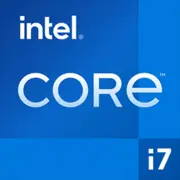Intel Core i7-4578U

インテル コア i7-4578U: 2014年ウルトラブック向けプロセッサの振り返りと2025年の現実
Haswell世代のモバイルチップの潜在能力と関連性を現代の状況で評価する
1. アーキテクチャとプロセス:基本と特徴
2014年に発売されたインテル コア i7-4578Uは、第四世代Haswellアーキテクチャに属しています。22nmプロセスで製造されており、その当時のパフォーマンスとエネルギー効率のバランスを意味していました。
- コアとスレッド: 物理コア2つ、ハイパースレッディングをサポート(4スレッド)。基本クロックは3.0GHz、Turbo Boost時の最大クロックは3.5GHzです。
- 統合グラフィックス: インテル アイリス グラフィックス 5100が重要な特徴です。これは40の実行ユニット(EU)とDirectX 11.1をサポートする最初のiGPUの一つであり、2014年のウルトラブックでは低設定でゲームを実行することを可能にしました。
- キャッシュ: 4MBのL3キャッシュは、オフィス作業やマルチメディアタスクの処理には十分な容量です。
アーキテクチャの特徴:
HaswellはIvy Bridgeに比べてIPC(クロックあたりの命令数)が5–10%向上しました。また、新しいAVX2命令のサポートが追加されており、ベクトル計算(ビデオエンコーディングに関連)を迅速化しました。
2. TDP 28W: エネルギー消費と熱設計
TDP(熱設計電力)28Wは、このプロセッサがコンパクトなシステムでのパッシブまたは控えめなアクティブ冷却を考慮して設計されていることを示しています。
- 実際の数値: ピーク負荷(例えば、レンダリング時)では、チップは35–40Wまで消費することがありますが、これは瞬間的です。
- 冷却: このCPUを搭載したノートパソコンは、通常コンパクトなクーラーが装備されており、2025年の条件下では高負荷時に過熱を引き起こす可能性があります(特にサーマルペーストが何年も交換されていない場合)。
3. パフォーマンス: 2025年のCore i7-4578Uは何を提供できるか?
Geekbench 6の結果(シングルコア: 821、マルチコア: 1510)は、このプロセッサがインテル コア i3-1315U(シングルコア約1800)などの予算向けの現代チップにも劣ることを示していますが、基本的なタスクにはまだ適しています。
- オフィスワーク:
— Microsoft Office、10〜15タブのブラウザ、Zoomは、ラグなしで動作します。
— Windows 11との互換性(TPM 2.0が必要)は可能ですが、軽量なOS(Linux、ChromeOS Flex)の使用が推奨されます。
- マルチメディア:
— 4Kビデオの視聴: 可能ですが、iGPUに負担がかかります。
— Lightroomでの画像編集: 小規模プロジェクトには受け入れ可能ですが、エクスポートはRyzen 5 5500Uの2〜3倍の時間がかかります。
- ゲーム:
— CS:GO: 720p、低設定で40〜50 FPS。
— Minecraft: 1080p、60 FPS(シェーダーなし)。
— 現代のAAAタイトル(2025年)は推奨されません。
Turbo Boost:
最大クロック3.5GHzは、1つのコアでのみ達成され、過熱までの20〜30秒間持続します。マルチスレッドタスクではTurboは3.2GHzに低下します。
4. 使用シナリオ: 2025年には誰に向いているか?
- 学生: 学業(文書、プレゼンテーション、オンラインコース)用。
- オフィスワーカー: ドキュメントとクラウドサービスの使用。
- 予備のデバイス: 旅行用のバックアップノートパソコンとして。
- レトロPC愛好者: コンパクトなメディアセンターの構築用。
向かない:
- ゲーマー(レトロゲーム以外)。
- ビデオ編集者や3Dデザイナー。
5. 自律性: バッテリーはどれくらい持つか?
TDP 28Wとバッテリー容量50Wh(2014–2016年のウルトラブックの典型)において:
- ウェブサーフィン: 5〜6時間。
- ビデオ: 4〜5時間。
省エネルギー技術:
- インテル スピードステップ: 動的クロック調整。
- C状態: 使用されていないコアのシャットダウン。
アドバイス: バッテリーの交換(費用$40〜60)とHDDからSSDへの移行がデバイスの寿命を延ばします。
6. 競合との比較
- AMD 2014年モデル: A10-7300(TDP 19W、Radeon R6)。シングルスレッド性能では劣っていましたが、GPUが優れていました。
- Apple MacBook Air 2014: Core i5-4260U(1.4GHz、HD 5000)を搭載。i7-4578Uは20〜25%速いです。
- 現代の類似品(2025年):
— インテル コア i3-N305: TDP 15W、マルチコアGeekbench 6 ~3500。
— AMD Ryzen 3 7320U: マルチスレッド性能で3倍速い。
7. 長所と短所
強み:
- 当時の高いシングルスレッド性能。
- 2014年にしては強力な統合グラフィックス。
- 仮想化技術のサポート(VT-x、VT-d)。
弱点:
- 2コアのみ — マルチタスクが制限される。
- 古いPCIe 2.0とUSB 3.0(2025年のUSB4およびPCIe 4.0に対して)。
- AVX-512およびAI加速のサポートなし。
8. ノートパソコン選びの推奨
2025年にこのプロセッサを搭載した中古デバイスを検討している場合:
- デバイスタイプ: ウルトラブック(例えば、Dell XPS 13 2014)。
- チェックポイント:
— バッテリーの状態。
— SSDの有無(必須!)。
— 最大RAM容量(通常8〜16GB)。
— ポート: HDMI、USB 3.0。
価格:
- 類似のパフォーマンスを持つ新しいノートパソコン(例:AMD Athlon Silver搭載のAcer Aspire 3) — $350から。
9. 総括: 2025年にi7-4578Uを検討する価値はあるか?
このプロセッサは、ウルトラブックが性能を求め始めた時代の遺物です。2025年には以下の用途に適しています:
- 基本的なタスクのための予算ソリューション(中古で$150まで)。
- 高速が不要だがコンパクトなデザインを重視するユーザー向け。
主な利点:
- 信頼性(適切なメンテナンスがあれば)。
- 部品の入手のしやすさ。
- アップグレードの可能性(SSD、RAM)。
しかし、新しい購入に関しては、インテル アルダー レイク-NやAMD Zen 3+を基にした現代モデルを選ぶ方が良いでしょう — 同じ価格で3〜5倍の性能を提供します。
基本
CPUの仕様
メモリ仕様
GPUの仕様
その他
ベンチマーク
他のCPUとの比較
ソーシャルメディアで共有する
または当サイトへのリンクを追加
<a href="https://cputronic.com/ja/cpu/intel-core-i7-4578u" target="_blank">Intel Core i7-4578U</a>